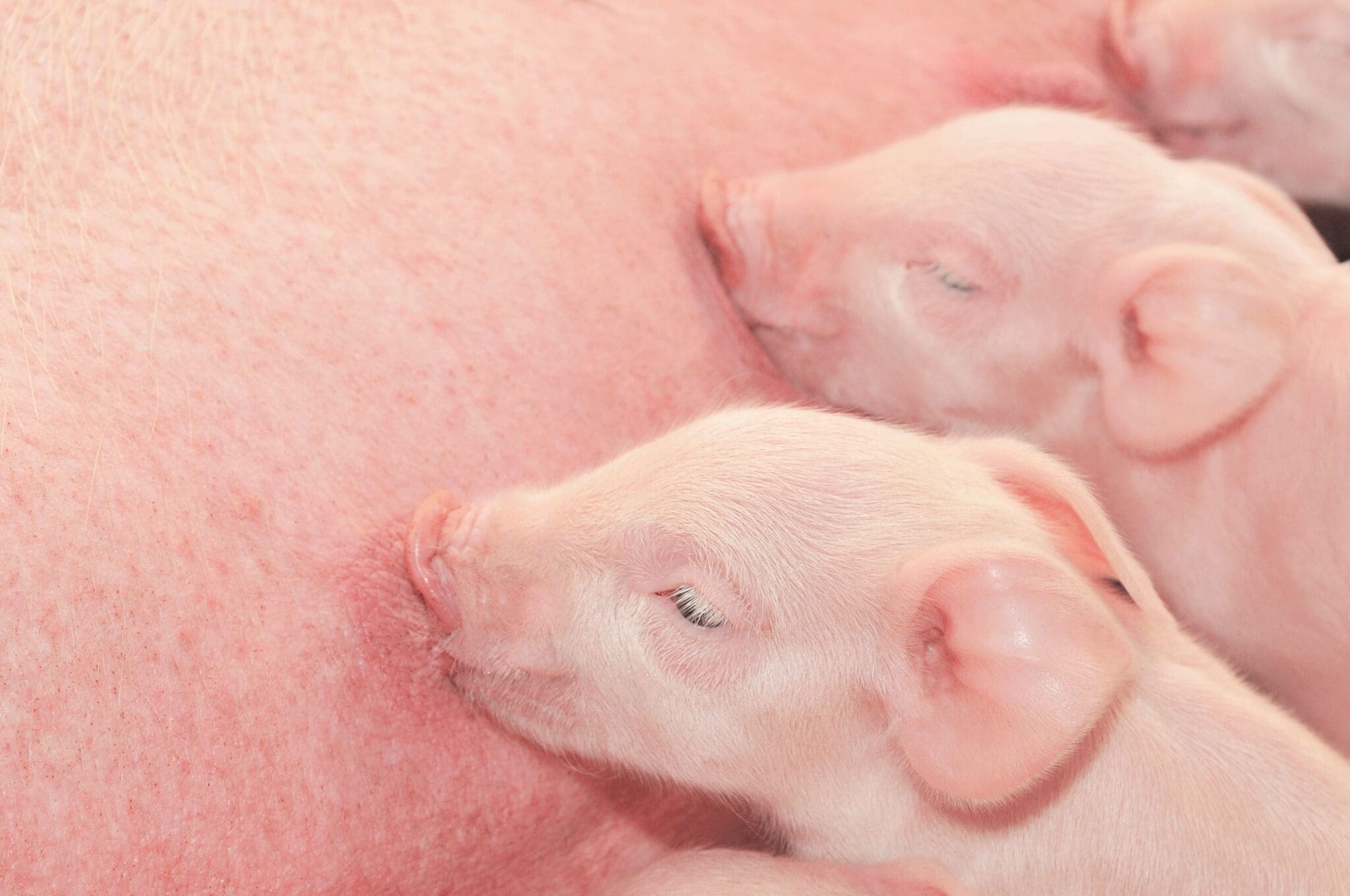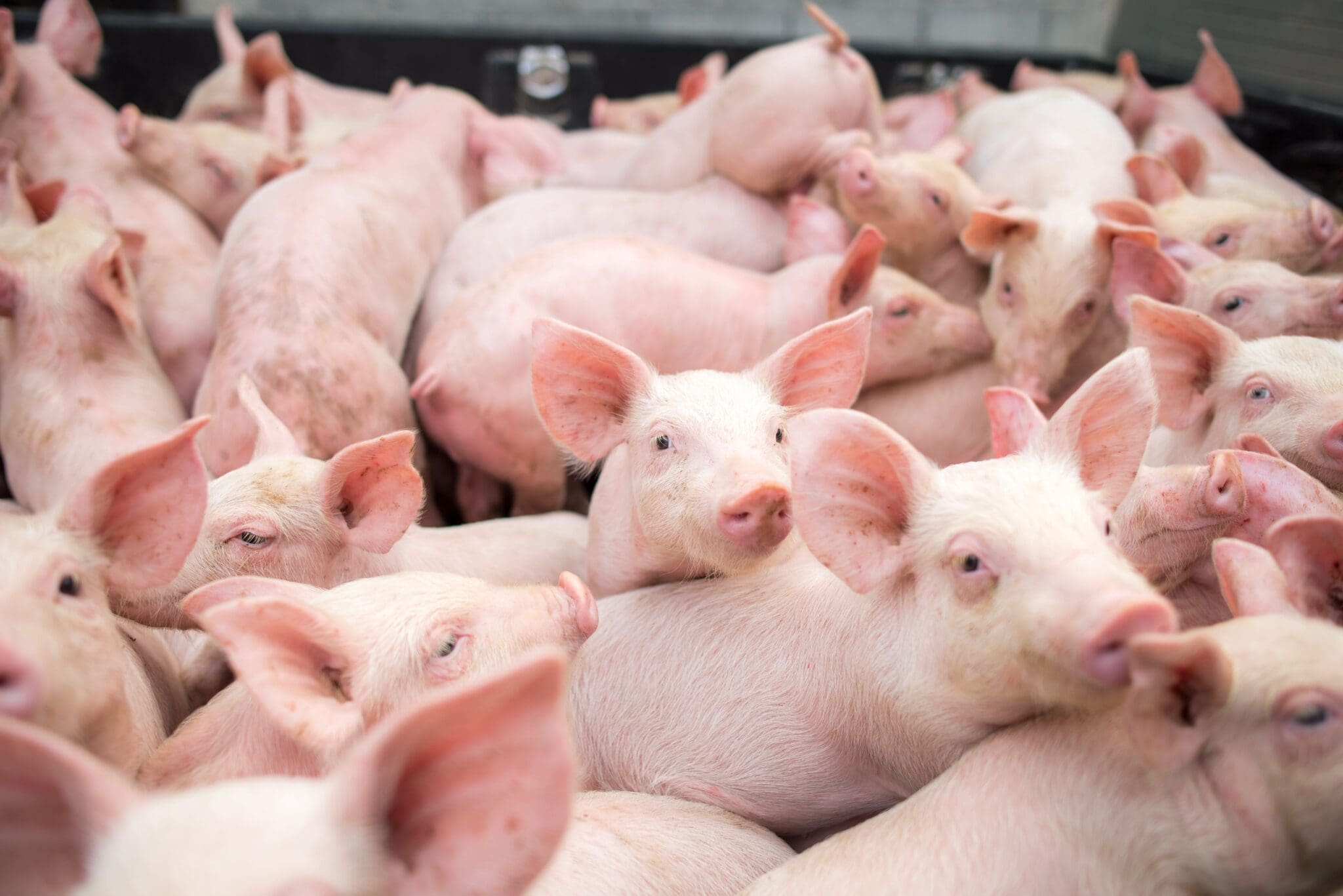Sows serve as integral components within the dynamic framework of a piggery. Their pivotal role involves the proficient and precise generation of the next cohort of porkers or breeding animals. This process is executed through a nuanced understanding of porcine biology, effectively incorporating scientific principles into breeding practices to ensure optimal lifetime performance.
The role of the sow
Sows play a crucial role in the economic value of a piggery, as they are the female pigs that give birth to piglets that will be the future source of income for the piggery when sold. The number of piglets born in each litter and the frequency of farrowing has a direct impact on the overall productivity and profitability of the piggery. The higher the reproduction rate, the higher the number of piglets, and this contributes to the growth of the herd and potential revenue.
The sow also has a significant influence on the rate of genetic improvement ofthe herd. Selecting high-performing sows for breeding can enhance desirable traits such as growth rate, feed efficiency, and disease resistance in the offspring. The other measurement of sow efficiency is litter weaning weight. The ability of sows to provide their piglets with adequate care, ensuring high survival rates and optimal growth, is critical. Healthy, well-nurtured piglets are more likely to reach market weight efficiently. A well-managed breeding programme reduces the need for frequent replacement of breeding stock and ensures a steady supply of piglets. Sows are a long-term investment, and their reproductive lifespan allows for the efficient use of resources.

Gilts and sows are culled from the breeding herd for several reasons, including unacceptable body shape, anoestrus and failure to conceive or maintain pregnancy, lactation failure, locomotive problems, temperament, and small litter size. Several of these decisions to cull may be related to extremes in body composition. Females that are too lean tend to experience low litter weaning weights, poor return to oestrus, smaller subsequent litter size, and physical weakness. Similarly problematic, females that are too heavy tend to experience anoestrus, difficulty farrowing, depressed appetite in lactation, poor milk production, and locomotive failure. Maintenance of body tissue reserves throughout each phase of a sow’s lifetime is an important management goal for breeding and farrowing managers in their efforts to improve sow longevity.
The huge cost involved in purchasing replacement gilts or producing your own in the piggery, together with the cost of keeping a sow, requires us to focus on improving sow longevity. This means we must keep the sow in the herd for as long as possible, preferably past her fourth parity, so that she can pay for herself and make money for the piggery. Sow longevity has been a continuous pressure point within the swine industry. The potential for a successful sow starts well before the sow is first bred. Optimal gilt management starts at birth, because litter of origin, lactation management, and the application of early selection strategies are early indicators of future performance and efficiency. A failure to select gilts with the greatest reproductive potential and inappropriate management of their physiological state and metabolic condition at service are key risk factors for poor sow lifetime productivity. The gilt development phase represents an opportunity to improve the longevity of the female. Feeding management of the gilt should begin at the time of weaning because proper nutrition during their development plays a crucial role in their overall health, reproductive performance, and longevity as sows. There are some nutritional strategies that should be followed in order to optimise gilt rearing and improve sow longevity.
Nutritional strategies
It is important to provide a well-balanced diet that meets the nutritional requirements of growing gilts, while avoiding excessive weight gain. The thickness of the gilt’s back fat is particularly critical. According to research, between 12 mm and 15 mm of back fat represents both an advantage for future longevity as a sow and the ideal thickness for influencing the secretion of leptin – the hormone that stimulates the release of luteinising hormone (LH) and, in turn, the reproductive cycle. If the gilt is either too lean or obese, longevity and productivity are likely to be compromised. The different genetic lines may require adjustments in the ratio of lysine to energy in the grower and finisher phases to ensure optimal, controlled weight gain. Regular assessment of the gilts’ body condition score (BCS) and weight is important to ensure they are on par with their expected growth rate. Aim for a BCS of 3,0 to 3,5 on a five-point scale during the gilt development phase.
Mineral supplementation
Gilts will undergo multiple cycles of pregnancy and lactation, which means that, over time, the mineral status within their body decreases. Lameness is among the top two reasons for premature culling of gilts and sows. Making sure that the gilt receives adequate levels of calcium and phosphorus during development will establish strong bone growth. Overfeeding calcium has just as negative an effect on the gilt than underfeeding it. Ensuring that the source of calcium used in the diet is bioavailable and that its solubility does not have any negative effect on the digestion of other nutrients saves you money and ensures optimal development. You can also save money by including a good phytase source that will ensure that all the phytate is broken down when it reaches the small intestine and that it does not chelate with other minerals or important nutrients when it is not broken down.
Contrary to popular belief, there are more minerals than just calcium and phosphorus that are just as important for skeletal development. Copper is important for collagen formation, which is crucial for the development of connective tissues and bones. Manganese is involved in bone formation and cartilage development. Zinc is necessary for the function of osteoblasts, the cells responsible for bone formation. Ensuring that all these minerals are provided at adequate levels and are biologically available to the pigs will optimise skeletal development during the growing period and the initial gestation/lactation phases to help ensure optimal lifetime performance.
Research has also demonstrated that the use of organic minerals can support the immune system, gut health, ligament growth, hoof health, and increase mineral levels within tissues. All of these are essential for gilt longevity within the herd. Zinc is involved in various physiological processes, including immune function, skin integrity, and reproduction. Adequate zinc levels are essential for proper reproductive organ development and function in gilts. Zinc is also vital for gut health and development, which is needed for optimal gilt and sow performance. Copper plays a role in pigmentation and iron metabolism and adequate copper levels support overall gilt health. Selenium is an important antioxidant and is involved in the regulation of thyroid hormones. It plays a role in preventing oxidative damage and supporting the immune system. Iron is essential to produce haemoglobin, which carries oxygen in the blood. Manganese plays a role in reproductive processes and can impact fertility in gilts. These are just a few minerals that are emphasised in this article; there are many more that must be provided either via the raw materials or in a premix to ensure optimal lifetime performance. It is important to pay attention to the bioavailability and the quality of the minerals that are included in the diet. If the minerals are not bioavailable to the animal, they cannot help in fulfilling their full function and are wasted via the manure.
Optimal protein levels and amino acid balance
Providing a diet that includes a balanced profile of essential amino acids to support proper muscle development and overall growth is important. Balancing the amino acid levels rather than concentrating on total dietary protein recommendations is better, because pigs require amino acids, which are found in protein, rather than protein itself. Lysine is the first-limiting amino acid in a maize-soy-based diet. Lysine recommendations are provided on a total basis and a standardised ileal digestible (SID) basis. Formulating diets on an SID basis allows one to account for differences in the availability of amino acids in the diet and more closely meet the pig’s amino acid needs while minimising nitrogen excretion, an important factor in gut health. All other essential amino acids are presented on an SID basis, determined based on amino acid ratios that were developed for each phase of the pig’s life in a piggery. These ratios have changed as the genetics of pigs have changed over time due to selection for lean growth and/or piglet production.
Finally, it is important the adjust the protein levels (amino acid ratios) in the diet based on the different gilt development stages. For example, during the grower phase, gilts may require more protein for muscle development and future milk production.
Nutrients for gut development and health
The gut plays a critical role in nutrient absorption, immune function, and overall health, and gut development is vital for optimal lifetime performance. Proteins provide essential amino acids necessary for the synthesis of structural proteins in the gut. Energy sources, such as carbohydrates and fats, provide the necessary fuel for metabolic processes and cellular functions in the gut. A proper energy balance supports optimal growth and maintenance of gut tissues. Trace minerals, such as zinc and copper, are involved in enzymatic processes and immune functions that contribute to gut health. Adequate dietary fibre is important for maintaining gut motility and supporting the growth of beneficial gut microorganisms.
Once the gut is developed, the microbial population in it must be maintained for optimal digestion, nutrient absorption, and overall well-being. Adequate fibre in the diet promotes the growth of beneficial bacteria in the gut, helps regulate bowel movements, and prevents constipation. It can also play a role in controlling inflammation in the gut. Probiotics – beneficial bacteria that support a healthy balance in the gut microbiota – can be added to the diet to improve digestion and nutrient absorption. Probiotics can also help prevent the overgrowth of harmful bacteria. Prebiotics are non-digestible compounds that promote the growth and activity of beneficial bacteria in the gut. They serve as food for probiotics and help maintain a healthy microbial community. Antioxidants, such as vitamins C and E and selenium, help protect the gut from oxidative stress. Oxidative stress can contribute to inflammation and damage to the gut. Certain minerals, such as zinc, also play roles in maintaining gut integrity and supporting the immune system.

Management strategies
There are also management strategies that can help ensure that gilts are set up for optimal lifetime performance. Growing gilts will likely undergo a series of vaccinations and, potentially, natural planned exposures, to reduce disease flare-ups in the gestation or farrowing house to minimise the impact of certain diseases on reproductive performance. The timing of these immunological exposures should not occur within the month before breeding. In addition, careful timing of stall acclimation or feeding system training should be done prior to the female cycling. Disruption in feeding during the oestrus cycle can reduce ovulation rates. Always ensure a smooth transition between diets to prevent stress and maintain proper body condition throughout the productive life of the pig. Ensure access to clean and fresh water. Water quality and the mineral content of the water can contribute to the overall health, digestion, and nutrient utilisation of gilts. Keeping detailed records of gilt performance, including weight gain, body condition, and reproductive status to track individual gilt health and performance history is important to ensure sow longevity.
Ensuring optimal lifetime performance
These feeding and management strategies, when implemented as part of a comprehensive management programme, can positively contribute to the development of healthy and long-living sows that will affect the profitability of the piggery.









Great usage of the seminar and great article !!!